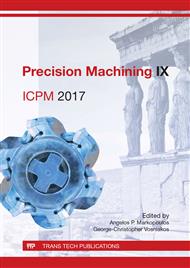p.456
p.463
p.470
p.481
p.487
p.495
p.503
p.509
p.516
Optimization of In-Plant Production Supply with Black Hole Algorithm
Abstract:
Logistic process is a basic factor in the success of manufacturing plants’ operation and has a direct impact on its efficiency, flexibility and reliability. Today’s successful operation of manufacturing processes views logistics as a high priority to ensure maximum utilization of resources. The material supply of manufacturing processes in the automotive industry is usually based on supermarkets and milk runs. This paper proposes an integrated supply model of manufacturing processes, which includes facility location and assignment. After a careful literature review, this paper introduces a mathematical model to formulate the problem of supermarkets and milk run based supply of machines. The model seeks the optimal location of buffers as well as the optimal assignment of buffers and machines so as to minimize the material handling costs while taking into account order limits of machines and capacities of resources. Next, we demonstrate an enhanced black hole algorithm dealing with multi-objective supply chain model to find the optimal structure of the system. Numerical results demonstrate how the proposed model supports the efficiency, flexibility and reliability of the manufacturing process.
Info:
Periodical:
Pages:
503-508
Citation:
Online since:
August 2017
Authors:
Keywords:
Price:
Сopyright:
© 2017 Trans Tech Publications Ltd. All Rights Reserved
Share:
Citation:


